The Canadians Development
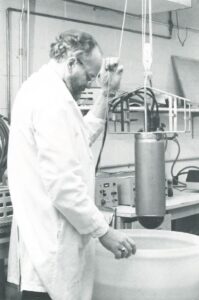
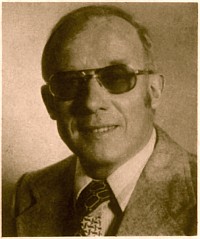
From the T.Dauphinee’s memories: “At one point we had a request to calibrate reversing thermometers that were being used by Bedford Institute of Oceanography for oceanographic measurements. They had not been calibrated below 0° C and they suspected problems near -2° C, the ocean water freezing point. We performed the calibration and did indeed find some errors. But we also suggested the thermometers seemed like a difficult way to measure temperatures, since their use took a long time and only gave discrete points along the temperature profile. They agreed, but said it was all they had. That got me interested and I designed a copper thermometer modelled on the one we used for specific heats, but in a fine spiralled stainless steel tube, that could be towed through the water at high speed or lowered slowly to obtain temperature profiles. But it turned out that they needed both temperature and salinity and also pressure for the depth measurement.
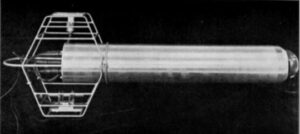
Suitable pressure sensors were commercially available, but salinity presented major problems because the sample would, of necessity, be grounded to the ocean and there were bound to be polarization voltages at the electrodes. However, I was able to design a 4-electrode cell and circuit, based on the circuit I had designed for Hall effect, but with modifications to account for the ocean ground, which performed very well.
We then proceeded to design a pressure protected hull for the electronics and choppers, with the temperature and salinity sensors mounted externally beside it. Three units were ordered by Canadian laboratories, one of them designed with the sensors on the end of the body to allow it to be lowered through a hole in the Arctic ice.
to design a pressure protected hull for the electronics and choppers, with the temperature and salinity sensors mounted externally beside it. Three units were ordered by Canadian laboratories, one of them designed with the sensors on the end of the body to allow it to be lowered through a hole in the Arctic ice.
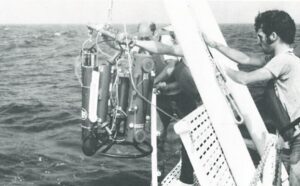
They were originally designed for multi-wire signal transmission, but at the last moment I designed a new amplifier circuit that allowed both DC power to the probe with ocean ground and digital data transmission in three-level code via a single insulated conductor surrounded by a steel jacketed load cable.
These units were used extensively by the Bedford Institute of Oceanography and by the Frozen Sea Research Group, based in Sydney BC. They were also manufactured and sold in limited numbers by Guildline Ltd.”
The Model 8755 Digital CTD System is a precision 16 channel measuring system, scanned 25 times per second, with measurement of Temperature, Conductivity Ratio and Pressure as standard input parameters.
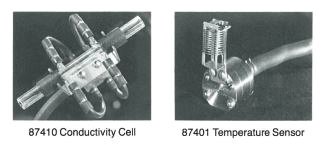 Measurement of other seawater parameters can be accommodated by fitting optional sensors and electronics in expansion facilities provided on all units. Interfacing to computers/data logging systems is made using either the parallel data port on the shipboard control unit for real-time raw data or optionally via RS232 interface in precalculated engineering units. Design emphasis has been on the accuracy, reliability, simplicity of calibration and maintenance, and comparability with conventional data acquisition equipment.
Measurement of other seawater parameters can be accommodated by fitting optional sensors and electronics in expansion facilities provided on all units. Interfacing to computers/data logging systems is made using either the parallel data port on the shipboard control unit for real-time raw data or optionally via RS232 interface in precalculated engineering units. Design emphasis has been on the accuracy, reliability, simplicity of calibration and maintenance, and comparability with conventional data acquisition equipment.
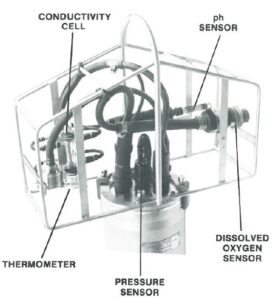
All sensors plug-in external to the pressure case except for the pressure sensor which is internally mounted:
- Conductivity sensor – 4 terminal electrode type in H-configuration Pyrex glass cell;
- Temperature sensor – 4 terminal copper resistance element in stainless steel capillary tube;
- Pressure sensor- strain gauge element in the 4-arm resistance bridge configuration;
- Dissolved Oxygen sensor (optional) – Beckman polarographic membrane type with temperature compensating thermistor;
- pH sensor (optional) – glass combination electrode type with built in reference junction.

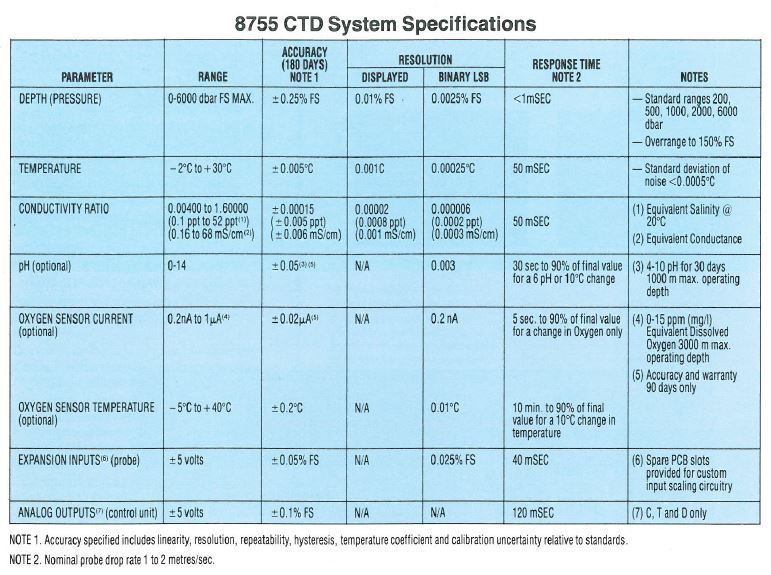






 Visit Today : 76
Visit Today : 76 Visit Yesterday : 196
Visit Yesterday : 196 This Month : 4476
This Month : 4476 Total Visit : 194807
Total Visit : 194807 Hits Today : 94
Hits Today : 94 Total Hits : 539261
Total Hits : 539261 Who's Online : 4
Who's Online : 4